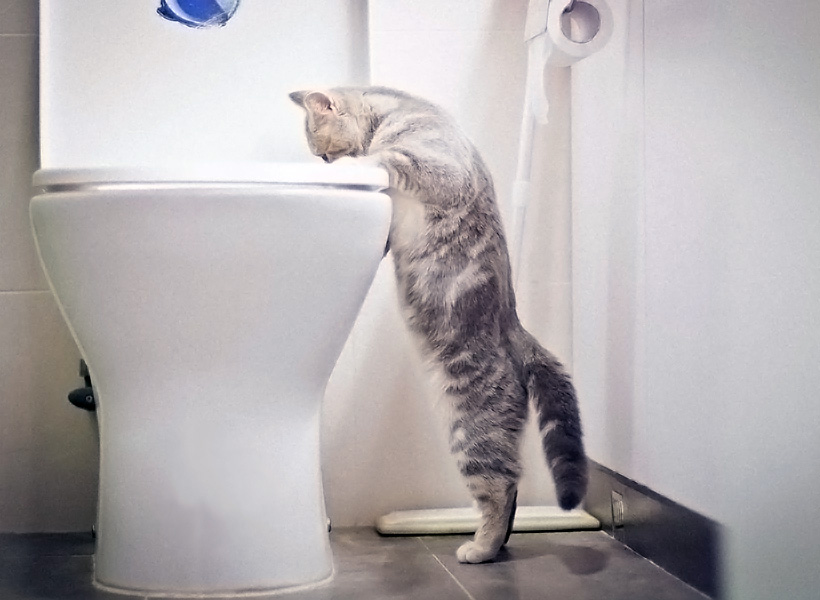Reasons Flushing Cat Poop Down Your Toilet Isn't a Good Idea - Tips for Safer Disposal
Reasons Flushing Cat Poop Down Your Toilet Isn't a Good Idea - Tips for Safer Disposal
Blog Article
We have come across this post about Don’t flush cat feces down the toilet down the page on the net and concluded it made good sense to write about it with you in this article.

Intro
As pet cat proprietors, it's important to bear in mind just how we take care of our feline pals' waste. While it may appear hassle-free to flush pet cat poop down the toilet, this practice can have damaging effects for both the atmosphere and human health and wellness.
Alternatives to Flushing
Luckily, there are safer and much more liable methods to dispose of cat poop. Take into consideration the following alternatives:
1. Scoop and Dispose in Trash
One of the most usual approach of throwing away cat poop is to scoop it into a biodegradable bag and throw it in the trash. Make sure to utilize a devoted trash inside story and get rid of the waste quickly.
2. Usage Biodegradable Litter
Go with naturally degradable cat litter made from products such as corn or wheat. These litters are eco-friendly and can be safely thrown away in the trash.
3. Hide in the Yard
If you have a yard, take into consideration hiding feline waste in an assigned location far from veggie yards and water sources. Be sure to dig deep enough to stop contamination of groundwater.
4. Mount a Pet Waste Disposal System
Purchase a family pet waste disposal system particularly designed for feline waste. These systems use enzymes to break down the waste, minimizing smell and ecological effect.
Wellness Risks
In addition to environmental issues, flushing feline waste can also posture health and wellness threats to people. Feline feces might have Toxoplasma gondii, a parasite that can create toxoplasmosis-- a potentially serious disease, especially for expectant ladies and people with weakened body immune systems.
Ecological Impact
Flushing pet cat poop introduces hazardous microorganisms and parasites into the water system, positioning a significant danger to marine ecological communities. These pollutants can adversely impact aquatic life and concession water high quality.
Verdict
Accountable animal possession expands beyond providing food and sanctuary-- it additionally entails correct waste administration. By refraining from purging cat poop down the bathroom and choosing alternative disposal techniques, we can reduce our environmental footprint and secure human health.
Why Can’t I Flush Cat Poop?
It Spreads a Parasite
Cats are frequently infected with a parasite called toxoplasma gondii. The parasite causes an infection called toxoplasmosis. It is usually harmless to cats. The parasite only uses cat poop as a host for its eggs. Otherwise, the cat’s immune system usually keeps the infection at low enough levels to maintain its own health. But it does not stop the develop of eggs. These eggs are tiny and surprisingly tough. They may survive for a year before they begin to grow. But that’s the problem.
Our wastewater system is not designed to deal with toxoplasmosis eggs. Instead, most eggs will flush from your toilet into sewers and wastewater management plants. After the sewage is treated for many other harmful things in it, it is typically released into local rivers, lakes, or oceans. Here, the toxoplasmosis eggs can find new hosts, including starfish, crabs, otters, and many other wildlife. For many, this is a significant risk to their health. Toxoplasmosis can also end up infecting water sources that are important for agriculture, which means our deer, pigs, and sheep can get infected too.
Is There Risk to Humans?
There can be a risk to human life from flushing cat poop down the toilet. If you do so, the parasites from your cat’s poop can end up in shellfish, game animals, or livestock. If this meat is then served raw or undercooked, the people who eat it can get sick.
In fact, according to the CDC, 40 million people in the United States are infected with toxoplasma gondii. They get it from exposure to infected seafood, or from some kind of cat poop contamination, like drinking from a stream that is contaminated or touching anything that has come into contact with cat poop. That includes just cleaning a cat litter box.
Most people who get infected with these parasites will not develop any symptoms. However, for pregnant women or for those with compromised immune systems, the parasite can cause severe health problems.
How to Handle Cat Poop
The best way to handle cat poop is actually to clean the box more often. The eggs that the parasite sheds will not become active until one to five days after the cat poops. That means that if you clean daily, you’re much less likely to come into direct contact with infectious eggs.
That said, always dispose of cat poop in the garbage and not down the toilet. Wash your hands before and after you clean the litter box, and bring the bag of poop right outside to your garbage bins.
https://trenchlesssolutionsusa.com/why-cant-i-flush-cat-poop/

As an enthusiastic person who reads on How to Dispose of Cat Poop and Litter Without Plastic Bags, I thought sharing that chunk was really useful. Remember to take the opportunity to share this blog if you enjoyed it. Many thanks for taking the time to read it.
Visit My Site Report this page